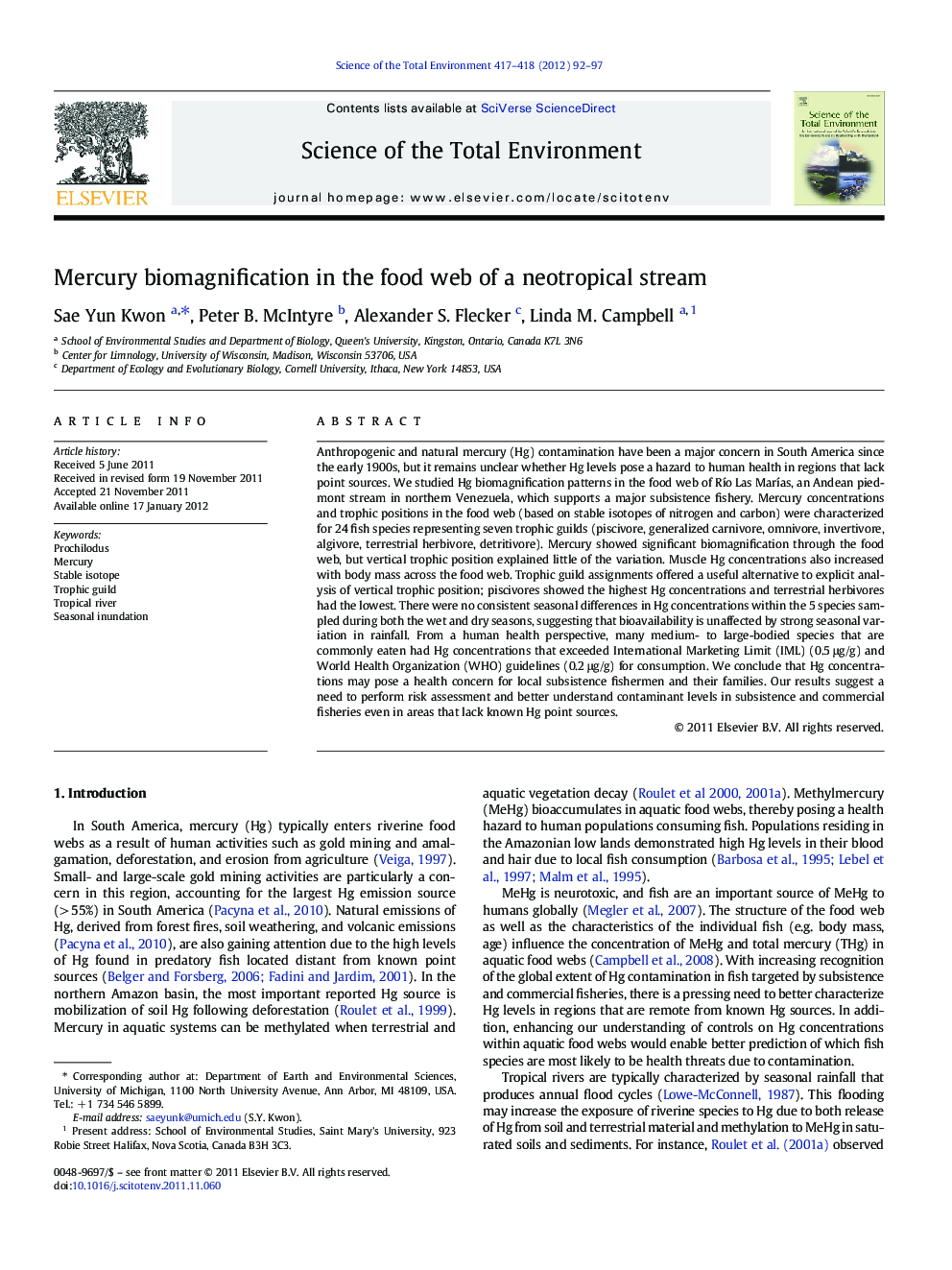| کد مقاله | کد نشریه | سال انتشار | مقاله انگلیسی | نسخه تمام متن |
|---|---|---|---|---|
| 4429663 | 1619832 | 2012 | 6 صفحه PDF | دانلود رایگان |

Anthropogenic and natural mercury (Hg) contamination have been a major concern in South America since the early 1900s, but it remains unclear whether Hg levels pose a hazard to human health in regions that lack point sources. We studied Hg biomagnification patterns in the food web of Río Las Marías, an Andean piedmont stream in northern Venezuela, which supports a major subsistence fishery. Mercury concentrations and trophic positions in the food web (based on stable isotopes of nitrogen and carbon) were characterized for 24 fish species representing seven trophic guilds (piscivore, generalized carnivore, omnivore, invertivore, algivore, terrestrial herbivore, detritivore). Mercury showed significant biomagnification through the food web, but vertical trophic position explained little of the variation. Muscle Hg concentrations also increased with body mass across the food web. Trophic guild assignments offered a useful alternative to explicit analysis of vertical trophic position; piscivores showed the highest Hg concentrations and terrestrial herbivores had the lowest. There were no consistent seasonal differences in Hg concentrations within the 5 species sampled during both the wet and dry seasons, suggesting that bioavailability is unaffected by strong seasonal variation in rainfall. From a human health perspective, many medium- to large-bodied species that are commonly eaten had Hg concentrations that exceeded International Marketing Limit (IML) (0.5 μg/g) and World Health Organization (WHO) guidelines (0.2 μg/g) for consumption. We conclude that Hg concentrations may pose a health concern for local subsistence fishermen and their families. Our results suggest a need to perform risk assessment and better understand contaminant levels in subsistence and commercial fisheries even in areas that lack known Hg point sources.
► Heavily-fished species often had Hg concentrations exceeding consumption guidelines.
► Hg biomagnification rates were low compared to other ecosystems.
► Trophic guild membership was an adequate predictor of Hg concentrations in lieu of high-resolution information.
► Hg concentrations showed no clear differences between seasons despite major fluctuations in rainfall.
Journal: Science of The Total Environment - Volumes 417–418, 15 February 2012, Pages 92–97